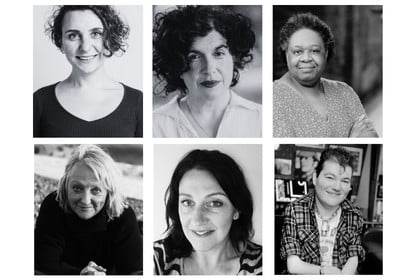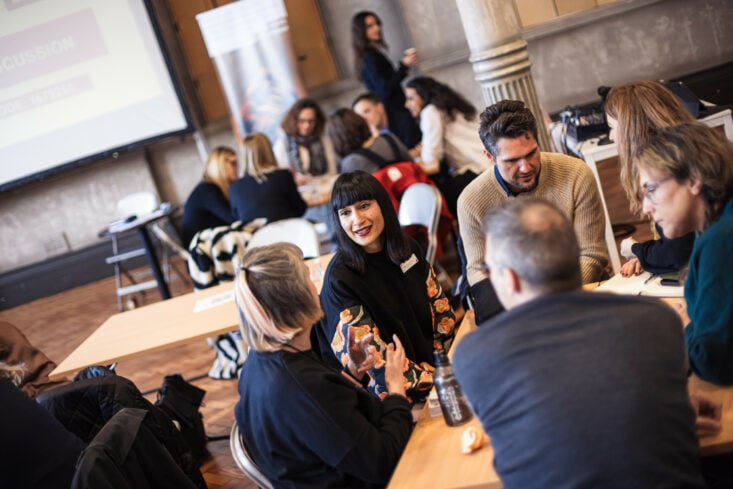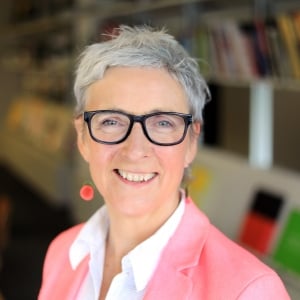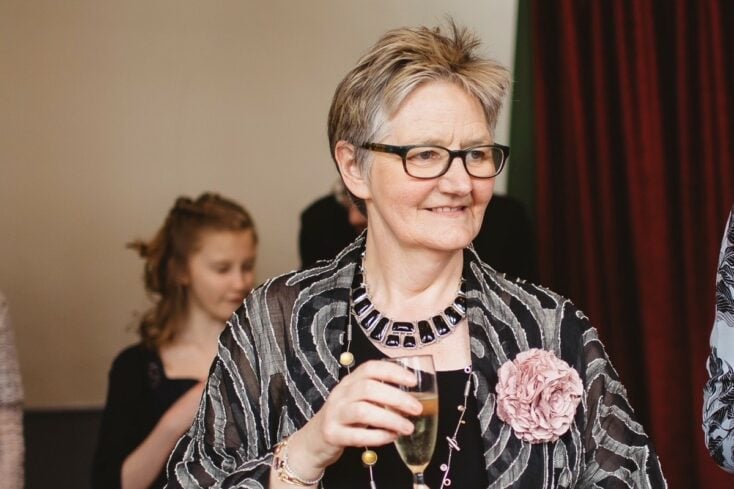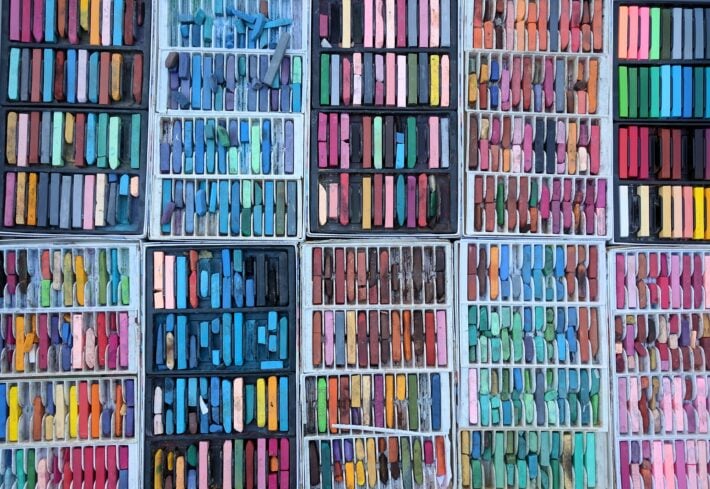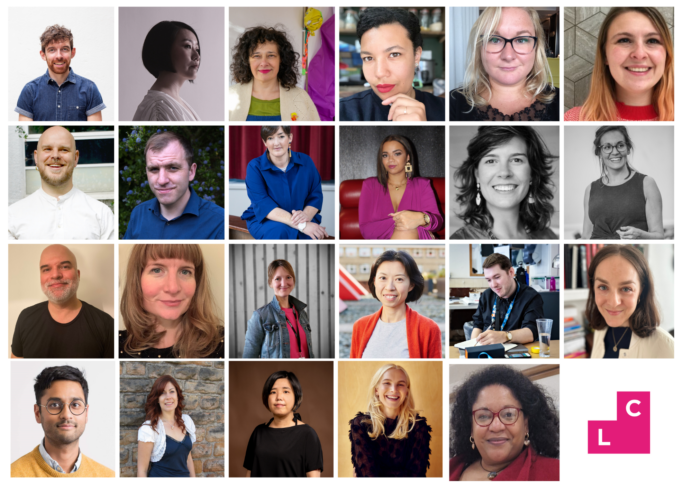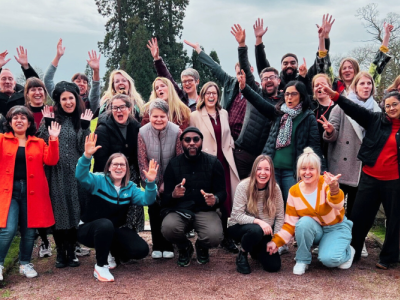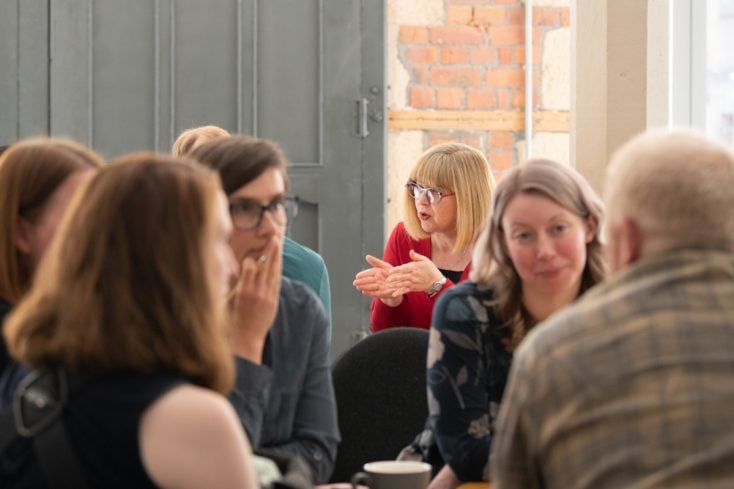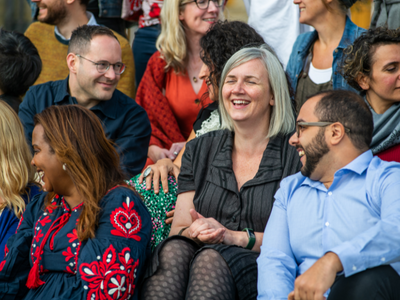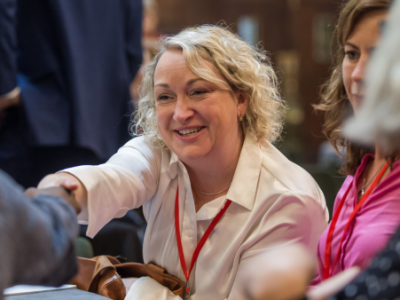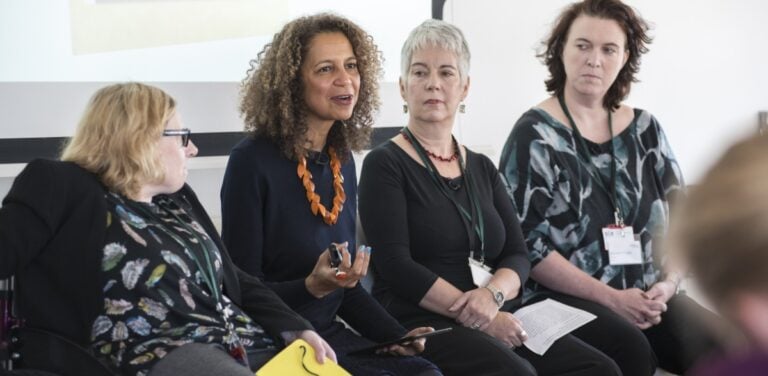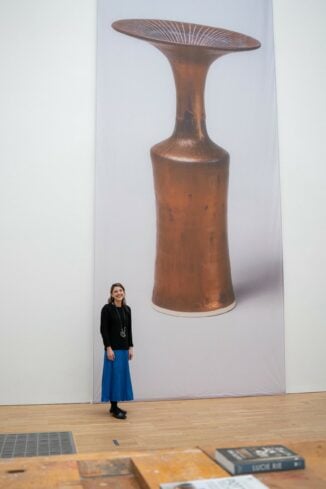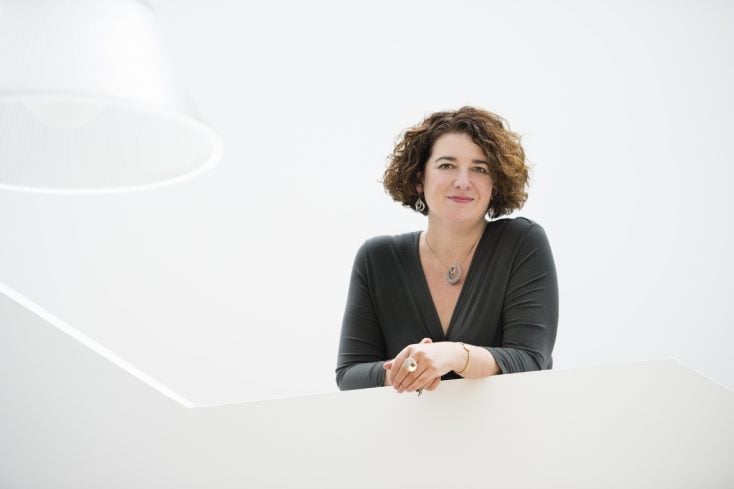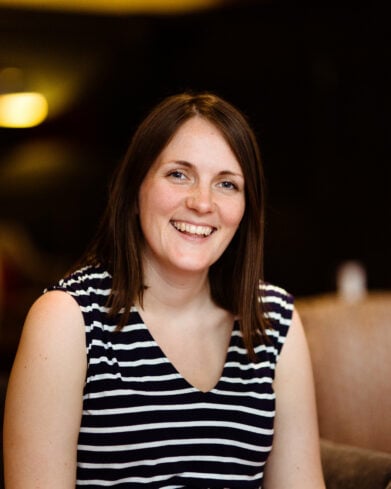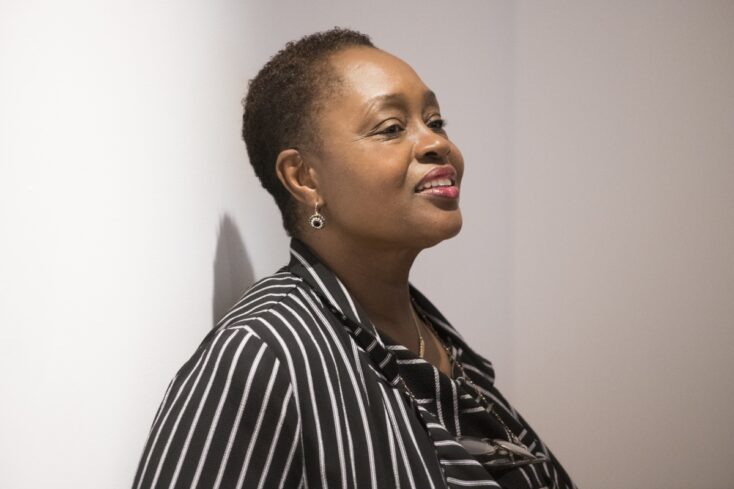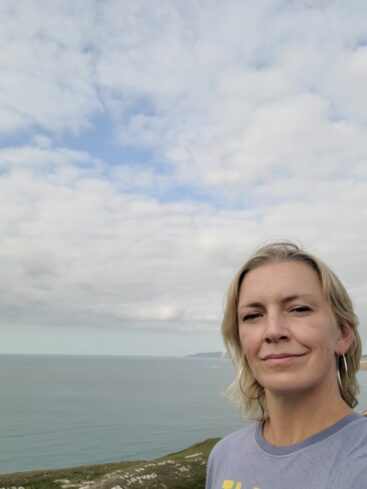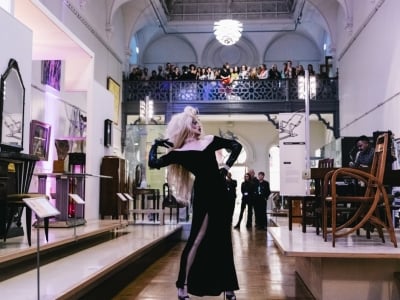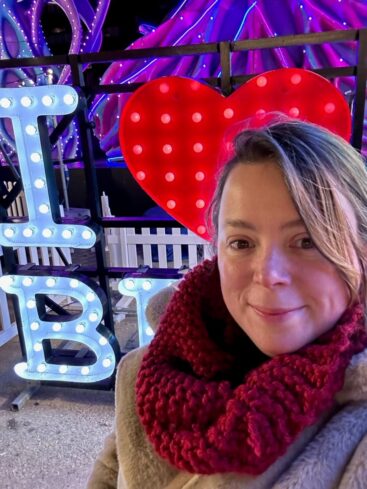Why I Want to be a Leader in a Rural Location
Clore 14 Fellow Helen Watson argues that rural locations should be seen as very attractive for strong cultural leaders, as the cultural offer is much richer and more diverse than commonly assumed.
I have always been passionate about great art and culture being accessible, located in and exhibited in rural locations. I didn’t feel the pull to move to London when I left university and, despite being told I would, I have rarely felt left out living in rural locations – in fact I have felt very fortunate. I have spent the past ten years living and working in Cumbria, and the cultural offer I have found has been one of variety, quality and relevance.
During my Clore Leadership Fellowship, my work placement was at Sadler’s Wells Theatre and for three months I based myself in London, soaking up the capital’s cultural scene. I visited performances of theatre, dance, music and musicals, I attended debates and lectures, and I viewed exhibitions. Accessing and seeing great art and culture is easy and convenient in London, as with many cities, but what if you don’t want to live or work in a city and instead choose a more rural location? Does that therefore mean the cultural offer is narrowed in content and limited in field? I would argue not.
I will discuss that museums and galleries, particularly in rural areas, are among some of the finest in the country. These venues display a broad range of nationally and internationally significant collections alongside high quality temporary exhibitions featuring major loans, and they provide important creative hubs actively used by local communities to come together and discuss and respond to contemporary issues. Museums and galleries also contribute widely to the creative industry case, helping to generate significant sources of income, employment and business in rural locations. In addition, research indicates that there is a shift as people are choosing to vacate major cities, moving instead to the countryside and more rural locations for health, wellbeing and financial reasons. Finally, as one of the few female leaders in Cumbria, I want to encourage more leaders, especially female, to embrace living and forging a career in rural locations to help address the current gender imbalance.
Museums and galleries in rural locations
Museums and galleries in rural areas show, collect and house internationally significant collections of artworks and artefacts. They tell the stories of people who worked and lived in the area, offer access to cultural events, and provide important archival storage to their visitors and local communities. Arts Council England started the Designation Scheme in 1997, identifying the best collections held in museums, libraries and archives across England. There are a total of 140 designated collections, with 32 in London and 14 in rural locations.[1]
I question why people should have to travel from their chosen rural location to a city to see great art. Why should school children have to travel to the nearest city to learn about their heritage or view an artwork by an international artist? The subject matter of art and culture is not defined or created by cities; cities do not have a stronghold on creating access to and showing great art and culture.
National Collections exhibiting outside London
National museums and galleries are increasingly keen, and encouraged by funders, to extend their reach, broaden their audiences, and create partnerships outside London and the major cities. This shift creates excellent opportunities for rural venues to borrow and showcase some of the world’s greatest artists to their local audiences.
In 2014, the National Gallery in London launched The Masterpiece Tour which was committed to promoting “the understanding, knowledge and appreciation of Old Master paintings to as wide an audience as possible”. Abbot Hall Art Gallery in Kendal displayed Rembrandt’s Self Portrait at the Age of 63. Other Old Masters which have been lent include Canaletto’s A Regatta on the Grand Canal, Manet’s The Execution of Maximillian and Hans Holbein the Younger’s A Lady with a Squirrel and a Starling. Venues from Barnard Castle in County Durham, Compton Verney in Warwickshire and Shetland all took part in the tour. In 2017, The British Museum launched a similar partnership focusing on ‘spotlight’ loans, touring Rodin: rethinking the fragment showing Rodin’s The Thinker. The tour of the sculpture, alongside a painting and medal also from the collection, will travel to galleries in Kendal, Bath and Walsall. These initiatives raise venues’ profiles, increase access and often cost the receiving venue very little as the lending venue covers all costs. The works selected often directly relate to the venue’s collection, heritage or location, creating new stories, knowledge and connections nationally.
Establishing a strong community position
Less competition from other cultural venues can work in the favour of museums and galleries in rural locations, as they can truly position themselves as the cultural hub of a community, playing an important and significant role in developing, retaining and connecting to rural communities. However, as leaders of cultural organisations, we also need to be mindful of how museums and galleries approach working with established local communities, and what topics and themes are focused on. It is crucial that as many local voices as possible are heard, not just the loudest, those with the biggest influence or those who can spare the time to get involved. Activities need to be meaningful and grounded in that particular community, to ensure that projects, initiatives and artists are not just parachuted in and out, leaving little legacy and impact.
Cornwall’s rural community embraces and thrives both culturally and economically around its culture and creative industries. Julia Twomlow, Director of the Telegraph Museum in Porthcurno, states “community is the culture in Cornwall”. Cornwall’s identity, history and heritage are deeply rooted in the arts. Creative industries are central to Cornwall’s economic prosperity. “Since 2010, nationally the value of the creative industries has increased by a third (34%). This is compared with average growth of 4.3% a year for the UK economy as a whole during the same period. We have several creative clusters in Cornwall. Research by NESTA confirms that in Penzance, for example, the percentage of creative employment in the town is equal to that of London.”[2]
The UK is living in a period of great political, social and cultural upheaval; we face a very uncertain future regarding the outcome of Brexit on the country and its diverse communities. Museums and galleries, by working with and alongside their local communities, can truly reflect and be responsive to the big issues and challenges they are facing, uniting them around such activity. Museums and galleries are well placed to tackle difficult and challenging contemporary life subjects through high quality programming. Such venues are safe and neutral places where culture, religion and society as a whole can connect, and marginalised voices can be heard.
In spring 2018, Lakeland Arts commissioned the artist Patricia MacKinnon-Day to create an exhibition at Abbot Hall Art Gallery, Tracing the Landscape: Cumbrian Farm Women. The site-specific show examined female roles in farming, their hopes, frustrations and place in an industry often seen as a ‘man’s world’, enabling an often unheard and overlooked voice to be heard in one of Cumbria’s leading cultural venues. Mackinnon-Day spent a year with five farm women from across Cumbria, aged between 30 and 80. Some have managed farms for generations, others were newer to the sector. She says: “To these five women, farming is not a job but a way of life. It is in their blood. Male voices around farming are well-documented, however women are often overlooked. Women farmers always seem pushed into the background. I wanted to bring the stories of this often marginalised group to the fore.”
Rural living and working benefits
Living and working in rural locations is not without challenges: poor public transport, areas of limited digital connectivity and scarce sponsorship opportunities due to less business activity and dispersed amenities, to name a few. Networking can be time consuming and require significant planning, especially if your venue has limited resources. However, in Public Health and Well-being in rural locations, published by the Local Government Association and Public Health England in February 2017, “The health of people in rural areas is on average better than that of urban areas with higher life expectancy and lower infant mortality and a lower number of potential years of life lost from cancers, coronary health disease and stroke.” In addition, the cost of living and accommodation is often cheaper than city living. These factors are adding up to see a growing trend of people relocating from urban to rural locations. “Number of Londoners abandoning capital hits 10-year high” ran a headline in The Guardian on Friday 29 December 2017 – the piece attributes this to the high cost of accommodation, living costs outweighing salaries, and poor health and wellbeing. The article continues that “The urge to quit London is so widespread that only a handful of the remotest corners of England and Wales did not see at least someone from the capital arriving to start a new life last year. According to the most recent official figures, analysed by The Guardian Newspaper, 292,000 people left the metropolis in the year to the middle of 2016, up 14% on a decade earlier and the highest level since 2006.” It would appear that it is increasingly challenging to have a high quality of life in London, and perhaps in other major cities.
Finally, as a female leader in Cumbria, there is a gender imbalance to address, with a high percentage of male leaders and chairs of cultural organisations in the area. Of the nine Arts Council England National Portfolio Organisations (Visual Arts and Combined Arts) in Cumbria only three have female directors – and one is a co-director. Similarly, there are seven male chairs or chief executives, and two women (Appendix 1). I find this research frustrating, worrying and alarming. What are the reasons behind these statistics? Is it due to a culture of old boys’ networks, unconscious bias, organisational politics or women simply not going for leadership positions? Whatever the reasons, women throughout the UK and beyond need to realise their potential and step up to address this imbalance.
In conclusion, I have explained why it is a very attractive offer to leaders to work in more rural locations instead of plumping for the major cities. There are very few reasons why rural locations should not be attracting strong cultural leaders; the cultural sector in relation to museums and galleries is rich and diverse, and can offer rewarding connectivity with local communities. Larger national institutions are keen to build up new partnerships, often at their own cost. The health and wellbeing benefits, lower living costs and cleaner environment are becoming increasingly attractive when faced with poor quality city living and dwelling. So come on leaders, women especially, what’s stopping you?
[1] Arts Council England PDF publication: Designated Outstanding Collections
[2] https://www.cornwall.gov.uk/leisure-and-culture/culture-team/
Themes Alumni Journeys Sector Insights


